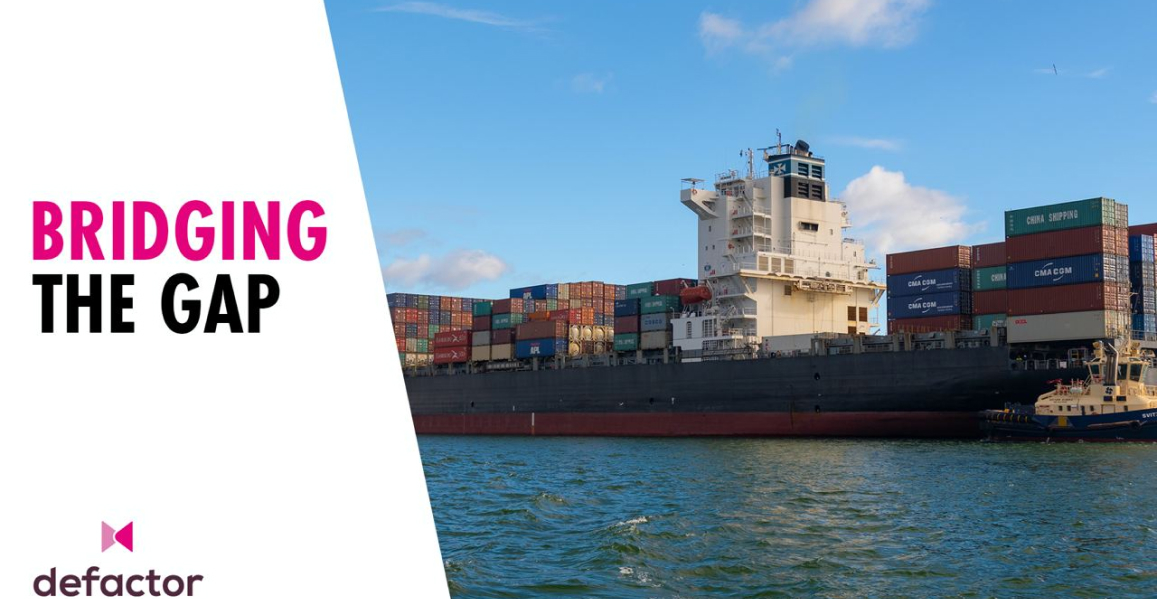Today, we all share the belief that we live in a globalised world. And this assumption is correct. But only in part. Between 1950 and 2007, international trade doubled, and for the first time surpassed 50% of global GDP Two pivotal factors have made this growth possible:
- Standardisation of data. The developments in Information Technology have led to common operating and telecommunication systems across the globe.
- Standardisation of goods. The adoption of the shipping container has introduced a load unit that virtually any terminal across the world can handle in the same way.
The importance of data is universally acknowledged, and the changes brought about by the Internet are here for everyone to see.
However, it is the container that is considered the most significant catalyst for trade facilitation. Dr Jean-Paul Rodrigue, a scholar of transportation geography at Hofstra University in New York, states: “Essentially, globalisation could not have existed without containerisation”.
These changes are so important because reliable, interoperable, and compatible standards for goods and services result in lower production, distribution, and maintenance costs.
Now, to enter a fully globalised era, the world still needs to standardise a third, fundamental element: money. What is required is access to finance under interoperable and universally accepted principles.
Blockchain evangelist and Ripple co-founder, Chris Larsen, makes it easy for us to grasp:
“You really can’t have workable globalisation, unless you have interoperability in three things: data, goods and money. We only have it in two things, data and goods. Without the money part, globalisation just doesn't work, it's incomplete.”
Today, companies can reach customers anywhere across the globe, transact and ship products cost-effectively. But paying suppliers and receiving payments globally is still a slow and expensive process.
If we then talk about access to credit, things become even more problematic as we’ll expand on later in the article.
For “money” to work, it needs to become cheap and transferred through universally recognised channels, which adopt the same standards.
The good news is that DeFi, or Decentralised Finance, is here to offer this coveted standard, while introducing a new paradigm that is disrupting the Trade Finance sector as we know it.
But before we dive into DeFi, let’s make ourselves familiar with the basic principles of Trade Finance.
How does Trade Finance work?
The Trade Finance industry is worth $12 trillion. A number that helps put things in perspective.
It is a complex category that involves a buyer of goods and services, a seller, and various intermediaries, such as banks, insurances and other financial institutions, that can facilitate the transactions between the first two parties by financing the trade.
For simplicity’s sake, we could say that Trade Finance is the mechanism that brings liquidity into International trade.
And this is how it normally works.
When companies want to apply for credit to finance their trades, they go to a bank.
The bank looks for their creditworthiness based on how many years they’ve been in business, their expertise in the field, and what assets they own (offices, equipment, etc.). These assets are used as guarantees, or collaterals the bank will seize if the borrowing company can’t make the repayments.
At that point, the bank issues a letter of credit, a document that stipulates the terms and conditions under which the bank will pay the seller on behalf of the buyer.
Then freight forwarders or logistic companies come into play, executing shipments exactly and precisely as per the letter of credit.
This step presents several risks, but the most common are:
- Risk of fraud
- Risk of Loss or Damaged Goods
- Risk of Defectiveness of Goods
As discussed above, the collateralisation of assets reduces risks for the banks. But if issues with the shipments arise, insurance companies step in to compensate the party that has incurred a loss.
Looking at it this way, it seems like a pretty efficient system. But the reality is far from it.
As it currently stands, the Trade Finance sector:
- Is paper intensive
- Involves several stakeholders, and low collaboration
- Is low trust and high risk
- Involves many steps and complex supply chains dynamics.
This is a system that favours large enterprises, which own assets that can be collateralised, and lenders that, thanks to those collaterals, don’t have to incur any genuine risks.
And to make things worse, financial institutions are often short-sighted in determining the actual values of goods being financed.
This leaves SMEs, with no asset considered “valuable” by the banks, out of the game.
Today, the unfulfilled credit demand represents an untapped $1.6 trillion market.
Another figure to reflect on.
Is Trade Finance ripe for change?
The current centralised system gives banks all the power and leaves them in charge of assessing who deserves credit and who doesn’t.
They have the last word on it, but their renowned low appetite for risk leaves many potential companies out of the equation.
Their inclination towards conservatism also explains why the system has not evolved despite its many issues.
Today the category presents the following pain points:
- SMEs struggle to secure funding through the traditional banking sector
- With interest rates at a record low, investors cannot find a steady flow of deals that enables them to earn a yield on their capital
- The process is paper-intensive and not all stakeholders can securely share data
- Financial institutions and insurance companies don’t have full visibility over the transit of goods
- Logistic providers are in the middle of a process flawed with low trust and low collaboration amongst many stakeholders
- The presence of several finance intermediaries makes global payments lengthy and expensive
- Different banking systems cause delays and increase risk in processing payments.
- Banks may not have the liquidity (or in some cases even the inclination) to provide lending services
In addition to the above issues, another dynamic is contributing to the destabilisation of the current system.
More than ever before, people have access to sophisticated finance products as individual investors. Therefore when it comes to business products and services, they expect a similar experience.
These “liquid expectations” that seep from one category to another, represent a further driving force towards the collision between traditional and decentralised finance.
What is Decentralised Finance (DeFi)?
DeFi allows companies and individuals to access the same services that banks offer: earn interest, borrow, lend, buy insurance, trade derivatives, trade assets, etc.
But DeFi is faster than the traditional system and doesn’t require paperwork or a trusted authority (the banks in the current system) to validate a transaction. It’s also global, peer-to-peer (directly between two agents, not through a centralised system or server), anonymous, and open to all.
This creates a new standardised approach to finance without the burdens and associated costs (offices, employees’ salaries, processes and procedures) of the current system.
Being accessible to anyone with an internet connection is more inclusive, which in the case of Trade Finance means that more players (such as SMEs) can easily tap into a large pool of liquidity.
How DeFi is disrupting Trade Finance
The blockchain technology that underpins DeFi can support collaboration and ensure access to the most up-to-date information about trade transactions.
Leveraging IoT, logistic companies can include sensors into their shipping containers and trucks, allowing them to monitor the transit of goods at all times throughout the process.
This physical data is securely shared, alongside the financial information (i.e. a Smart Contract, which replaces the traditional Letter of Credit) on the blockchain.
As you can see, linking physical data with financial information gives higher visibility across the entire supply chain. In turn, this allows for more accurate risk mitigation for banks, insurers and all parties involved.
The other advantage of DeFi is the ease of access to a large pool of liquidity.
Imagine investors injecting cash into a pool that companies can access when they require funding for their trades.
Until today, people and businesses (what the industry calls Asset Originators) had value locked in their physical assets. These were assets banks rarely considered worthy of credit.
With DeFi, Assets Originators can now convert the physical value of their assets into digital tokens. These become the collaterals, or the guarantees, that investors can use to open lines of credit for borrowing companies.
This opens a world of opportunity for the whole category.
Benefits of DeFi for Trade Finance.
DeFi addresses the industry’s major pain points offering while the following benefits:
- Reduced entry barriers
- Easier access to liquidity and funding, by bringing the value of physical assets to the blockchain
- Faster process with no paperwork
- Shifting of the lending criteria from a buyer’s lending capability or their creditworthiness to the actual goods - the commodity acts as collateral and a natural risk mitigator
- Redistribution of the risk by monitoring shipments through sensors (IoT)
- Sharing of physical and financial data via secure technology
- Lower risks, increased trust
- Fewer parties involved
- No need for a trusted authority
- More democratic, inclusive system - especially for SMEs
Bottom Line: DeFi is closing the loop on globalisation
Following the standardisation of data, thanks to IT developments, and the standardisation of goods with the adoption of the container, the world is now ready to close the loop on globalisation, with a financial system governed by interoperable and universally accepted principles.
DeFi, thanks to the blockchain and IoT technologies, is the golden opportunity for the Trade Finance industry to solve its most critical issues and meet the demand of 74% of global businesses that today see their credit applications rejected.
Looking ahead, if we want to make DeFi and the Trade Finance sector truly inclusive, we need to remove the barriers for investors and businesses who crave access to the market, but do not possess the technical knowledge and time to manage liquidity pools in this space.
Their access to a decentralised and democratic system is critical if we want to take international trades to a new milestone of growth and development.
Written by Ernesto Vila, CEO of Defactor
Follow them on Twitter for more industry insights
Disclaimer: This article is provided for informational purposes only. It is not offered or intended to be used as legal, tax, investment, financial, or other advice.
Investment Disclaimer












